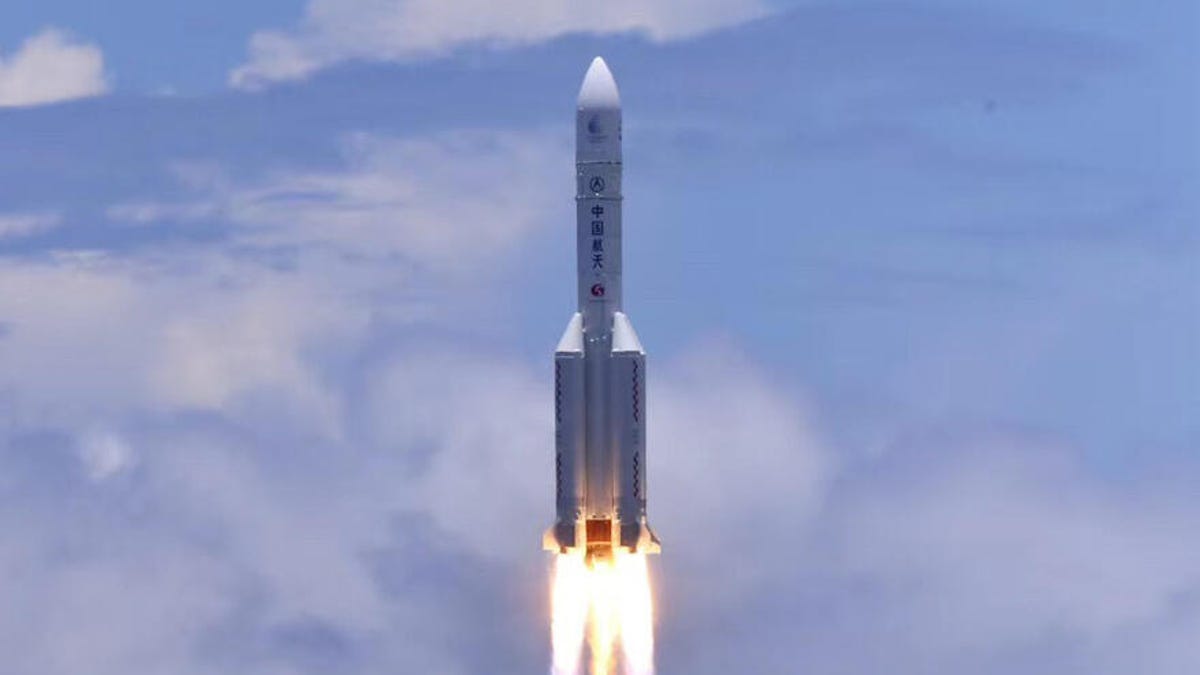China's Tianwen-1 mission launches to Mars
Private streams broadcast through Chinese social media ensured rocket fans could follow along.

The Long March 5 carrying Tianwen-1 to Mars on July 22.
China is, it appears, headed to Mars. A Long March 5 rocket lifted off from Wenchang Satellite Launch Center on Hainan Island, in the South China Sea through partly cloudy skies on Thursday afternoon, local time. The stark white rocket blazed a trail through the blue at 12:41 p.m. local (9:40 p.m. PT). However, China National Space Administration (CNSA), the national space agency, are yet to confirm it has reached its intended orbit and is on its way to the red planet.
It was a little different to the live launch day coverage we've come to expect from the likes of NASA and SpaceX. No official livestreams were provided by CNSA and there was no official countdown. Instead, many avid rocket-watchers -- myself included -- were following private videos streamed to Chinese social media platforms Weibo and Douyu.
Douyu user PhilLeaf seemed to have one of the best views of the launch, but streamers constantly battled dropouts and disconnections. A YouTube channel "LC-123" had just under 5,000 concurrent viewers approximately a minute before launch and as the rocket took off, provided excellent views.
The launch was ideal, but until CNSA confirms Tianwen-1 has made it to its initial parking orbit, there's still a chance Tianwen-1 might not make it to the red planet. Earlier flights of the Long March rocket have seen the second stage reach a parking orbit around 13 minutes after launch. Chinese state media service CCTV have reported that the mission was a success and the probe is now in its transfer orbit to Mars. We'll update this post if we hear more.
Long March 5 blasting off carrying Tianwen-1.
After coasting in its parking orbit, its thrusters will fire again and send it on its journey toward Mars. Tianwen-1, which includes an orbiter, a lander and a rover, is expected to reach the red planet in February 2021.
It's been a busy time for Mars probes. On Sunday, the UAE's Hope probe launched to Mars from Japan. On July 30, NASA is expected to launch its new rover, Perseverance. Fortunately, that one will be broadcast live on NASA TV, so we should have excellent views of the final robotic explorer to blast off this month.
Here's a video of the launch of Tianwen-1 atop the Long March 5 Y4. Source: https://t.co/a5vbXcTijb pic.twitter.com/7oRLNegDNK
— Andrew Jones (@AJ_FI) July 23, 2020

